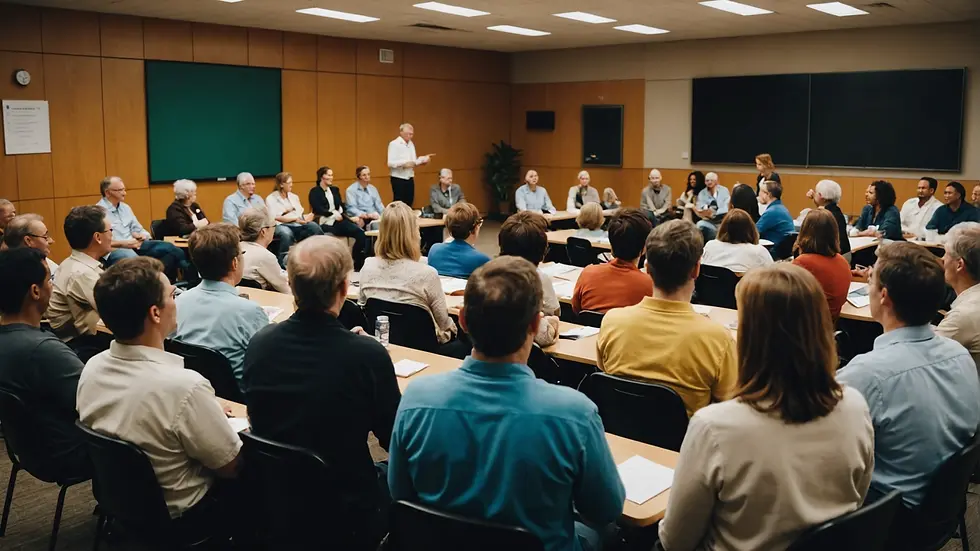The drug crisis in Harlan, KY, reflects a significant issue impacting countless communities across the United States. With its beautiful yet challenging Appalachian landscape, Harlan grapples with deep-rooted social, economic, and healthcare challenges made worse by substance abuse. This blog post takes a close look at Harlan's ongoing struggle with drug addiction, its causes, the impact on local families, and promising approaches to healing and recovery.
Understanding the Landscape of Addiction
The drug problem in Harlan, KY, has complex roots. Key factors include tough economic conditions, historical context, and mental health issues. Many residents find themselves using drugs as an escape from harsh realities.
Harlan's economy has historically centered around coal mining, a sector that has drastically declined. This transition has resulted in unemployment rates hovering between 7% and 10%, which is notably higher than the national average, leading to increased anxiety, depression, and substance abuse.
The strain of financial instability, combined with limited job opportunities, contributes significantly to addiction issues. Community members often note that the stigma surrounding mental health makes it difficult for individuals to seek help, resulting in cycles of addiction that persist across generations.

The Impact on Families and Community
The spread of addiction deeply affects families and the broader community. Children often grow up in unstable environments, making them more likely to face educational and behavioral challenges. According to recent reports, up to 20% of children in Harlan live in households affected by substance abuse.
Parents struggling with addiction find it challenging to provide the emotional support essential for healthy child development. This environment can lead to neglect, abuse, and other adverse outcomes, thereby perpetuating Harlan's drug problem.
Schools in the area see rising rates of absenteeism and disciplinary actions linked to issues in home life. As addiction takes hold, it places immense pressure on public resources, straining local healthcare systems and social services.
The emotional toll on families worsens when law enforcement resorts to punitive actions, fostering feelings of shame instead of promoting hope and recovery.
Breaking the Cycle: Education and Prevention
To combat the drug problem in Harlan, KY, education and prevention must take precedence. Community involvement is essential to implement programs that educate about the dangers of drug use.
Local schools and community centers can lead the charge by organizing workshops and seminars focused on the realities of substance abuse. For example, a recent initiative in the region educated over 300 students about the risks associated with drug use, focusing on open discussions about addiction.
Peer-led initiatives can also be effective. Youth can advocate against drug use by sharing their stories and lessons learned. Collaborating with local athletes and respected figures can enhance outreach efforts, creating an environment that supports those seeking help.
Access to Treatment and Recovery Services
Access to treatment services is vital in addressing the drug crisis in Harlan. Many local residents find limited options for support, highlighting the need for comprehensive programs that account for diverse needs.
Local hospitals and clinics should aim to enhance mental health and substance abuse services. For instance, increased offerings of outpatient therapy and support groups can significantly improve access. A recent survey revealed that expanding these services could potentially reduce relapse rates by 30%.
Partnerships between healthcare facilities and community organizations can streamline care, ensuring those in need can access treatment without delays. Treatment programs should also include family therapy, which has been shown to improve recovery outcomes by fostering family involvement throughout the process.

The Role of Law Enforcement and Policy Reform
To effectively tackle the drug problem in Harlan, a shift in law enforcement strategy is necessary. Historically, the response to addiction has leaned heavily towards punishment rather than support.
Law enforcement can adopt harm reduction strategies, focusing on education and rehabilitation. For example, implementing drug courts can help divert individuals into treatment instead of the criminal justice system. Such programs can significantly reduce recidivism rates, supporting sobriety in the long term.
Advocating for policy reforms at local and state levels can lead to increased funding for addiction services. Ensuring resources are available for mental health and substance abuse programs can create a more supportive environment for those seeking recovery.
Community Initiatives and Support Networks
Grassroots organizations have sprung into action, providing critical support for individuals and families affected by addiction in Harlan. These groups often coordinate support meetings and outreach events aimed at raising awareness.
Support groups create safe spaces for sharing experiences, helping build connections among those battling similar struggles. For instance, a recent support group in Harlan reported that over 45 attendees benefitted from shared stories and collective support.
Local churches and faith-based organizations can also play a vital role, offering spiritual guidance and practical assistance to those in recovery. Organizing community events that emphasis unity, such as family game nights or clean-up days, helps break down the stigma associated with addiction and fosters community healing.
Encouraging Hope and Resilience
Amidst the drug crisis, stories of resilience and recovery shine through as sources of hope. Individuals who have reclaimed their lives can serve as advocates for change, sharing their experiences to inspire others.
Celebrating recovery success stories can shift the community’s narrative surrounding addiction. By focusing on positive outcomes, Harlan can foster a culture that supports individuals seeking help. Engaging local media to highlight these transformations reminds residents of the strength within their community.
Moving Forward Together
Confronting the drug problem in Harlan requires collaboration and understanding. By addressing underlying issues, improving access to treatment, and fostering a network of community support, Harlan can forge a path toward recovery.
As residents unite to confront addiction, it will be vital to advocate for policy reform and educational initiatives. The journey ahead may be challenging, but together, the people of Harlan can build a community founded on strength, healing, and renewed potential.


Commentaires